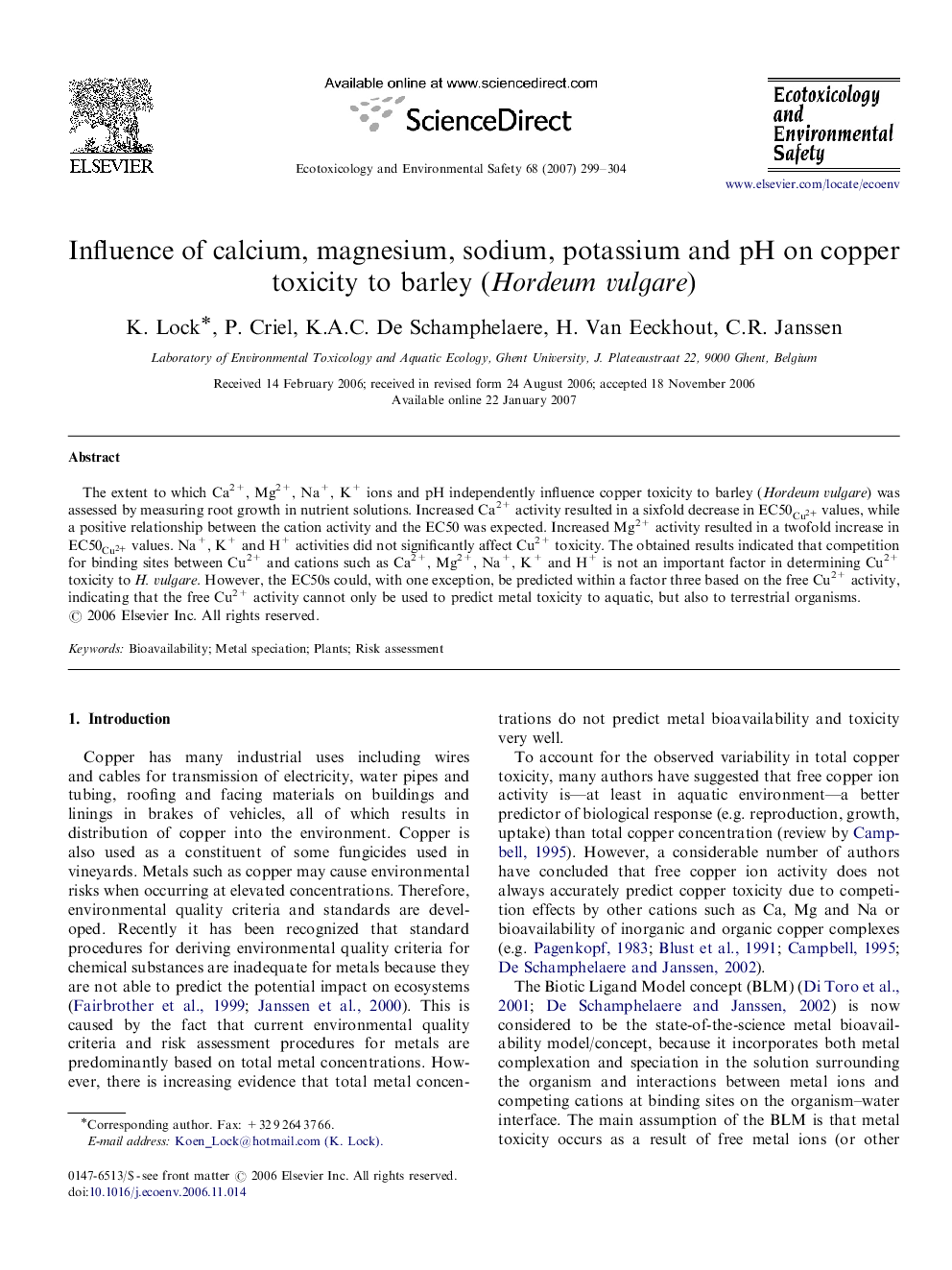| Article ID | Journal | Published Year | Pages | File Type |
|---|---|---|---|---|
| 4422182 | Ecotoxicology and Environmental Safety | 2007 | 6 Pages |
Abstract
The extent to which Ca2+, Mg2+, Na+, K+ ions and pH independently influence copper toxicity to barley (Hordeum vulgare) was assessed by measuring root growth in nutrient solutions. Increased Ca2+ activity resulted in a sixfold decrease in EC50Cu2+ values, while a positive relationship between the cation activity and the EC50 was expected. Increased Mg2+ activity resulted in a twofold increase in EC50Cu2+ values. Na+, K+ and H+ activities did not significantly affect Cu2+ toxicity. The obtained results indicated that competition for binding sites between Cu2+ and cations such as Ca2+, Mg2+, Na+, K+ and H+ is not an important factor in determining Cu2+ toxicity to H. vulgare. However, the EC50s could, with one exception, be predicted within a factor three based on the free Cu2+ activity, indicating that the free Cu2+ activity cannot only be used to predict metal toxicity to aquatic, but also to terrestrial organisms.
Related Topics
Life Sciences
Environmental Science
Environmental Chemistry
Authors
K. Lock, P. Criel, K.A.C. De Schamphelaere, H. Van Eeckhout, C.R. Janssen,
